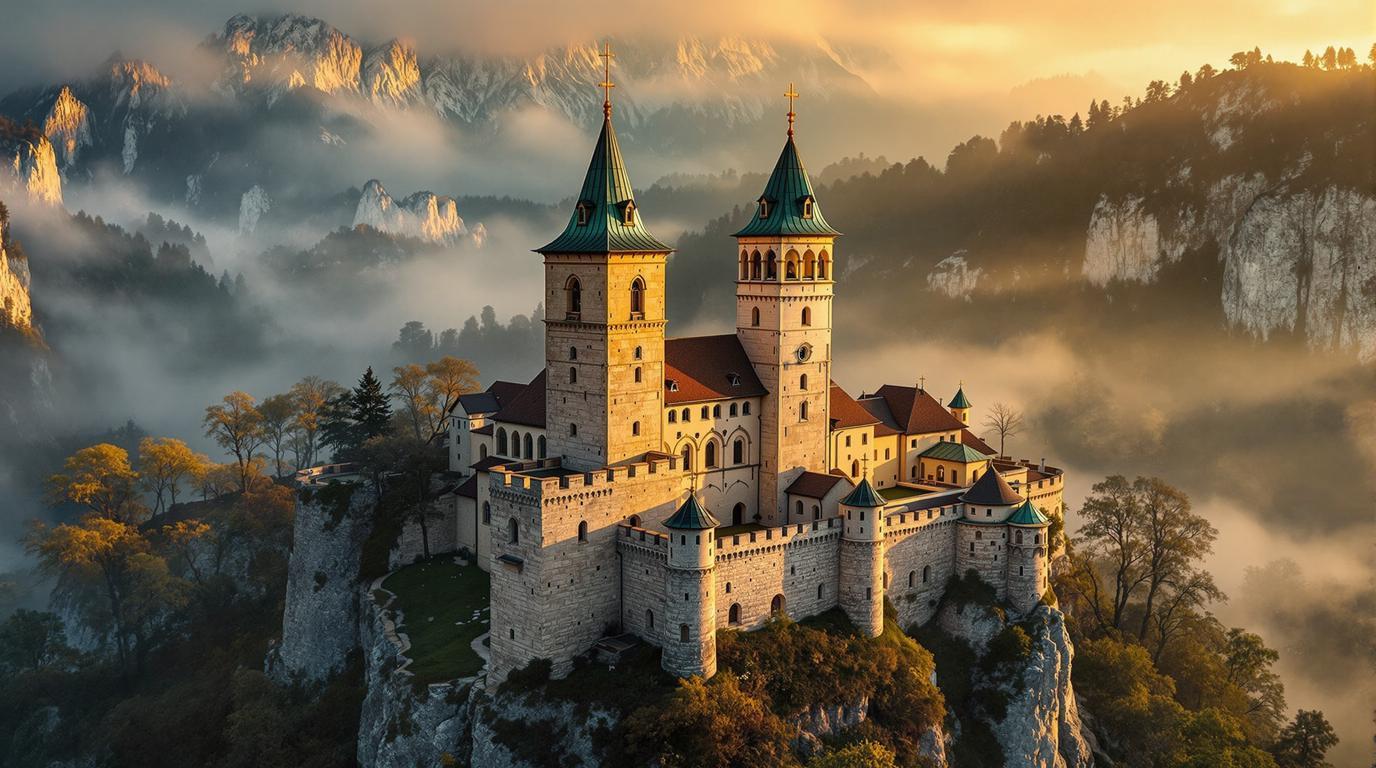I stand beneath the entrance arch, momentarily frozen by the dissonant silence. Above me, copper-green towers pierce the predawn sky, the last stars fading as morning brushes the deserted village square. It’s precisely this sweet spot between night and day when Slovenia’s Škocjan Caves region reveals itself—before tour buses arrive, before shopkeepers unlock their doors, when only locals collecting fresh bread acknowledge my presence with quiet nods.
Where limestone mountains cradle forgotten medieval hamlets
The Karst Plateau stretches across southwestern Slovenia like a limestone sponge, honeycombed with underground rivers and caverns. But while thousands queue daily for Postojna Cave’s electric train rides, the UNESCO-protected Škocjan system and its surrounding villages remain gloriously overlooked.
“Tourists rush through on day trips from Ljubljana,” explains Ana Grahor, whose family has lived in the region for seven generations. “They see the caves for two hours and leave. But we live within a living museum that breathes with the seasons.”
This forgotten pocket of Europe bears witness to centuries of cross-cultural influences—Venetian, Habsburg, Slavic—visible in every weathered doorway and church spire rising from the undulating terrain.
Three extraordinary experiences beyond the underground
A mountaintop breakfast with shepherd philosophers
I climb the narrow switchback trail to Nanos Mountain just as sunrise ignites the Adriatic coastline 20 miles distant. Halfway up, smoke rises from a small stone structure—the shepherds’ hut where Jože and Marija Podobnik have spent every summer for 43 years.
“Come, eat,” Jože commands, placing a wooden board laden with air-dried pršut, sheep cheese, and fragrant honey before me. As we sip strong Turkish coffee, he recounts tales of partisan fighters hiding in these mountains during World War II. Time slows to the rhythm of his stories and the quiet preservation of cultural memory that feels increasingly rare in our digital age.
Medieval frescoes illuminated by flashlight
In the hamlet of Hrastovlje (population 143), a fortified church stands behind defensive walls built against Ottoman raids. Inside, caretaker Rozana unlocks a small wooden door with a medieval iron key.
“Most never see this,” she whispers, directing my flashlight beam toward the ceiling. Above us, partially restored 15th-century frescoes depict the Dance of Death—skeletal figures leading peasants, kings, and cardinals to the grave. The raw, haunting imagery feels strangely intimate in this space that, like other medieval pilgrimage sites across Europe, remains virtually unchanged for centuries.
Flavors fermented in limestone cellars
Evening finds me descending worn stone steps into the 300-year-old wine cellar beneath Mahnič Homestead in Dragonja village. Proprietor Matjaž Mahnič pulls wines directly from oak barrels into simple glasses, explaining how the region’s unique microclimate creates mineral-rich teran wine—so deeply crimson it stains the glass.
“My grandfather taught me to listen to the wine,” he says, tapping a barrel with gnarled knuckles. “It speaks differently in each season.” We pair the robust teran with jota, a hearty stew of sauerkraut, beans, and smoked pork that perfectly balances the wine’s acidity—a centuries-old culinary marriage that defies modern gastronomy.
Navigating the hidden Karst with insider knowledge
Timing your exploration
Visit between late April and early June to witness wildflowers carpeting meadows while avoiding summer crowds. Early mornings (before 9:00) and late afternoons (after 16:00) offer the caves’ chambers almost to yourself.
Transportation secrets
Rather than joining organized tours, rent a car in Ljubljana and follow the meandering country roads marked “Vinska Cesta” (Wine Road). These scenic routes connect villages that rarely appear in guidebooks but offer authentic interactions.
Where to rest your head
Skip hotels entirely and book a “tourist farm” stay. Organic homestead Pri Friščih offers simple rooms above their family kitchen for €45, including farm-to-table breakfast and historical accommodations that preserve the region’s architectural heritage.
The gentle rhythm of a vanishing world
As darkness settles over the plateau on my final evening, I join villagers in the courtyard of a limestone farmhouse. No one checks the time; conversations flow without digital interruptions. Children play games their grandparents once played. In this moment, I understand what draws me to places like this—not spectacular sights but the increasingly rare experience of unhurried human connection in a world racing toward something it can’t quite name.
